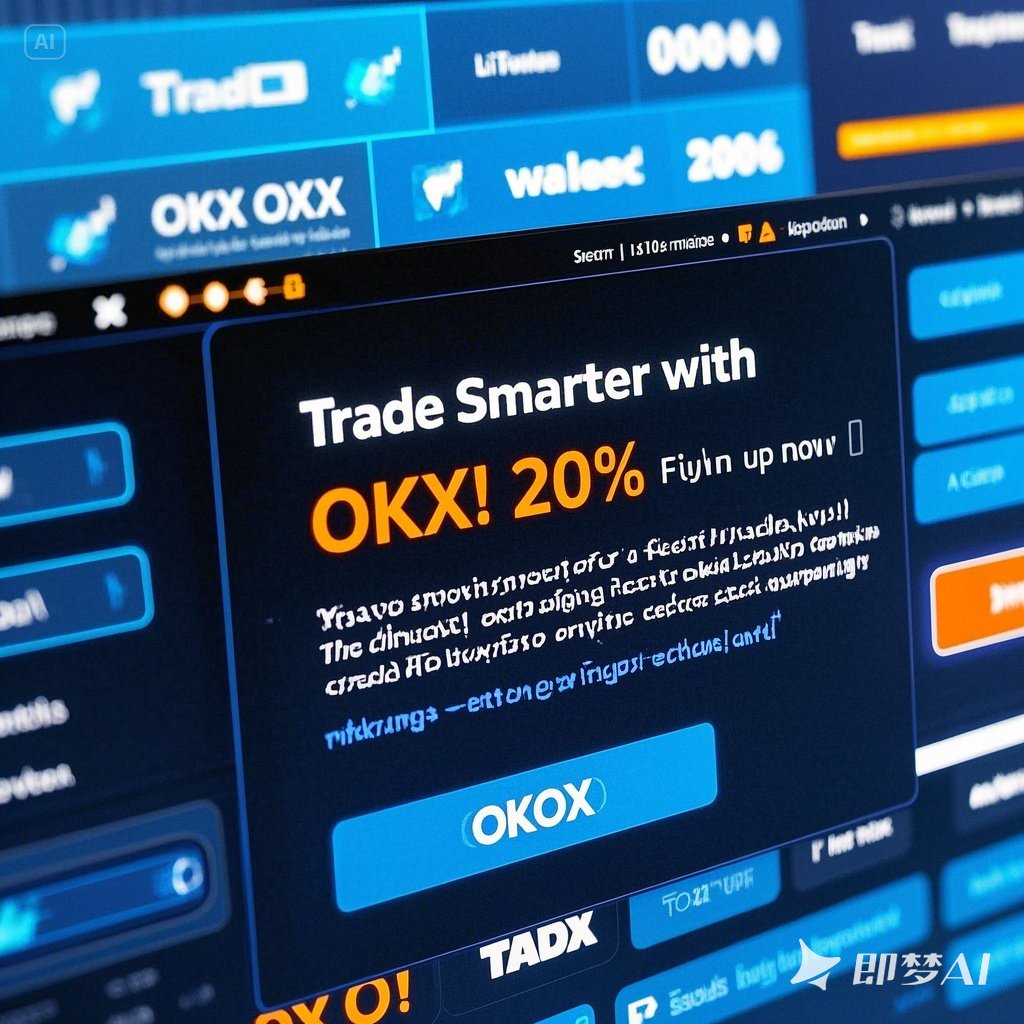DAX Index Today: How Inflation, US Tariffs, and Global Trade Tensions Could Impact German Stocks
Don’t just sign up — trade smarter and save 20% with referral codes: Binance WZ9KD49N / OKX 26021839
Current Inflation Rates in Germany
Current Inflation Rates in Germany
Inflation is a key economic indicator that reflects the rate at which the general level of prices for goods and services rises, thereby eroding purchasing power. In Germany, one of the largest economies in the European Union, inflation has been a topic of significant discussion in recent years due to various global and domestic factors. Understanding the current inflation rates in Germany provides valuable insights into the country’s economic health and its impact on consumers and businesses.
Overview of Recent Inflation Trends
As of early 2024, Germany has experienced fluctuating inflation rates, influenced by energy prices, supply chain disruptions, and monetary policy decisions from the European Central Bank (ECB). According to data from the German Federal Statistical Office (Destatis), the annual inflation rate in Germany was approximately 2.7% in January 2024, slightly lower than the previous month but still above the ECB’s target of 2%.
This figure reflects the ongoing effects of the energy crisis triggered by the war in Ukraine, which led to soaring gas and electricity prices. Although these costs have begun to stabilize in some areas, the broader impact on other sectors—such as food, transportation, and housing—continues to contribute to price increases.
Drivers of Inflation in Germany
Energy Prices: Energy costs remain a major driver of inflation in Germany. The country’s reliance on imported natural gas and oil has made it particularly vulnerable to global market fluctuations. Supply Chain Disruptions: Global supply chain issues, exacerbated by the pandemic and geopolitical tensions, have led to higher production and transportation costs, which are passed on to consumers. Wage Pressures: As inflation persists, workers have increasingly demanded higher wages to maintain their standard of living, leading to potential cost-push inflation. Monetary Policy: The ECB’s response to inflation, including interest rate hikes, has had a mixed impact on the German economy, affecting borrowing costs and investment activity.
Impact on Consumers and Businesses
Rising inflation has placed financial pressure on German households, particularly those with fixed incomes or limited savings. Essential goods such as food and energy have seen significant price increases, prompting many families to adjust their spending habits.
For businesses, inflation can lead to higher operating costs, reduced profit margins, and increased uncertainty about future demand. Small and medium-sized enterprises (SMEs) are especially vulnerable, as they often lack the resources to absorb rising costs without passing them on to customers.
Government and Central Bank Responses
The German government has implemented several measures to mitigate the impact of inflation on citizens, including subsidies for energy bills and support for low-income households. Additionally, the ECB has raised interest rates multiple times in 2023 and 2024 to curb inflation, aiming to bring price growth back to its target range.
However, the effectiveness of these measures remains a subject of debate. While higher interest rates can help reduce inflationary pressures, they also risk slowing down economic growth and increasing unemployment if not managed carefully.
Looking Ahead
As Germany continues to navigate the challenges of inflation, the outlook remains uncertain. Factors such as global economic conditions, energy market stability, and the pace of monetary tightening will play a crucial role in shaping future inflation trends.
For investors, policymakers, and everyday citizens, staying informed about inflation dynamics in Germany is essential. Monitoring key economic indicators and understanding the broader implications of inflation can help individuals and organizations make more informed financial decisions.
Impact of Inflation on the DAX Index
Impact of Inflation on the DAX Index
The DAX (Deutscher Aktienindex) is one of the most important stock market indices in Europe, representing the performance of the 30 largest and most liquid German companies listed on the Frankfurt Stock Exchange. As a key economic indicator, the DAX is influenced by a variety of factors, including interest rates, global trade dynamics, and macroeconomic conditions such as inflation. Understanding how inflation affects the DAX is crucial for investors, analysts, and policymakers alike.
Understanding Inflation and Its Economic Implications
Inflation refers to the rate at which the general level of prices for goods and services rises over time, leading to a decrease in purchasing power. Central banks, such as the European Central Bank (ECB), monitor inflation closely and adjust monetary policy accordingly to maintain price stability. When inflation is too high, it can erode corporate profits, reduce consumer spending, and lead to higher interest rates, all of which can have a ripple effect on stock markets like the DAX.
How Inflation Affects the DAX
1. Corporate Profitability: Rising inflation often leads to increased production costs, such as raw materials and energy. For German multinational corporations, which are heavily exposed to global supply chains, these cost pressures can squeeze profit margins, especially if they are unable to pass on higher costs to consumers. This can result in lower earnings and, consequently, a decline in stock prices.
2. Interest Rates and Borrowing Costs: Central banks typically respond to high inflation by raising interest rates. Higher interest rates increase borrowing costs for businesses and consumers, which can slow down economic growth. The DAX includes many large industrial and financial firms that rely on credit, so rising interest rates may negatively impact their valuations and stock performance.
3. Consumer Spending: Inflation can reduce real disposable income, leading to lower consumer spending. Since the German economy is export-driven, with many DAX-listed companies relying on international demand, reduced domestic consumption can indirectly affect sales and profitability.
4. Investor Sentiment: Inflationary environments often create uncertainty in financial markets. Investors may become more risk-averse, leading to a sell-off in equities, including the DAX. However, certain sectors, such as commodities or energy, may perform better during periods of high inflation, potentially creating sector-specific opportunities within the index.
Cases of Inflation Impact on the DAX
Historically, the DAX has shown sensitivity to inflation trends. For example, during the period of high inflation in the early 1980s, the DAX experienced significant volatility as central banks raised interest rates to curb price increases. More recently, the inflation surge following the COVID-19 pandemic and the Ukraine war led to a reevaluation of corporate earnings and investor expectations, affecting the DAX’s trajectory.
Strategies for Investors Amid Inflation
Given the potential negative impact of inflation on the DAX, investors may consider several strategies to mitigate risk:
Diversification: Spreading investments across different asset classes and sectors can help reduce the overall impact of inflation on a portfolio. Real Assets: Investing in real assets such as commodities, real estate, or infrastructure can provide a hedge against inflation. Dividend Stocks: Companies with strong dividend payouts may offer some protection during inflationary periods, as dividends can keep pace with rising prices. Short-Term Bonds: Holding short-term bonds can reduce exposure to interest rate risk, which is particularly relevant when inflation prompts central banks to raise rates.
Conclusion
Inflation plays a significant role in shaping the performance of the DAX index. While moderate inflation can be a sign of a healthy economy, excessive or unexpected inflation can lead to higher interest rates, reduced corporate profits, and lower investor confidence. Understanding these dynamics allows investors to make more informed decisions and navigate the complexities of the German stock market effectively.
Recent Changes in Tariff Policies
Recent Changes in Tariff Policies
The global economic landscape has seen a significant shift in recent years, with many countries reevaluating their tariff policies to adapt to evolving trade dynamics. These changes have been driven by a combination of factors including geopolitical tensions, economic protectionism, and the need for domestic industries to remain competitive in an increasingly interconnected world.
Global Trade Tensions and Their Impact
One of the most notable developments in tariff policy has been the escalation of trade tensions between major economies such as the United States, China, and the European Union. In response to perceived unfair trade practices, several countries have implemented new tariffs on imported goods, leading to a wave of retaliatory measures from trading partners. These actions have not only affected traditional sectors like manufacturing and agriculture but have also had ripple effects across the technology and services industries.
Economic Protectionism and Domestic Industry Support
Many governments have introduced or increased tariffs as a means of protecting domestic industries from foreign competition. This trend is particularly evident in countries that are seeking to boost local production and reduce reliance on international supply chains. For instance, some nations have imposed higher duties on imported electronics, automotive parts, and raw materials to encourage investment in local manufacturing capabilities.
Trade Agreements and Tariff Reforms
While some countries have taken a more protectionist approach, others have pursued new trade agreements to lower barriers and promote free trade. Recent negotiations have led to the revision of existing pacts and the creation of new ones aimed at fostering economic cooperation and reducing the complexity of tariff structures. These reforms often include provisions for digital trade, environmental standards, and labor rights, reflecting the broader concerns of modern economies.
Implications for Consumers and Businesses
The changes in tariff policies have had a direct impact on consumers, who now face higher prices for imported goods due to increased duties. At the same time, businesses are navigating a more complex regulatory environment, requiring them to adjust their sourcing strategies and supply chain operations. Companies that rely heavily on international trade have had to invest in alternative markets and diversify their supplier base to mitigate the risks associated with fluctuating tariffs.
The Role of International Organizations
International organizations such as the World Trade Organization (WTO) and regional bodies have played a critical role in monitoring and mediating tariff disputes. While these institutions have faced criticism for their limited effectiveness in resolving conflicts, they continue to provide a platform for dialogue and negotiation among member states. As global trade becomes more fragmented, the importance of multilateral cooperation in shaping fair and transparent tariff policies has never been greater.
In conclusion, the recent changes in tariff policies reflect the ongoing challenges and opportunities in the global economy. As countries balance the need for economic growth with the imperative to protect domestic interests, the future of international trade will likely be shaped by continued policy adjustments and evolving diplomatic relations.
How Tariffs Affect German Exports
How Tariffs Affect German Exports
Germany is one of the world’s leading exporters, with a strong industrial base and a reputation for high-quality manufacturing. Its exports span a wide range of sectors, including automotive, machinery, chemicals, and electronics. However, the imposition of tariffs—taxes on imported goods—can have significant implications for Germany’s export economy. Tariffs can affect trade flows, alter competitive dynamics, and influence the overall economic performance of the country.
Understanding Tariffs and Their Purpose
Tariffs are taxes imposed by governments on imported goods. They serve several purposes, such as protecting domestic industries from foreign competition, generating revenue, or retaliating against unfair trade practices. While they may provide short-term benefits to certain sectors, they often come with long-term consequences, particularly for export-oriented economies like Germany.
The Impact on German Export Competitiveness
One of the most direct effects of tariffs on German exports is the potential loss of competitiveness. When other countries impose tariffs on German goods, it increases the cost for foreign buyers, making German products more expensive compared to alternatives. This can lead to a decline in demand, especially if competitors offer similar products at lower prices. For example, if the United States imposes a tariff on German automobiles, American consumers might opt for domestically produced vehicles instead.
Supply Chain Disruptions and Increased Costs
Germany’s export industry is deeply integrated into global supply chains. Many German manufacturers rely on imported components and raw materials. Tariffs on these inputs can increase production costs, which may be passed on to consumers or absorbed by businesses. In some cases, companies may need to restructure their supply chains, which can be both costly and time-consuming. This ripple effect can weaken the overall profitability of German exports.
Retaliatory Measures and Trade Wars
Tariffs often trigger retaliatory measures from affected trading partners. If Germany faces increased tariffs on its exports, other countries may respond by imposing their own tariffs on German goods. This can lead to a trade war, where both sides suffer from reduced trade volumes and higher costs. The automotive sector, in particular, has been vulnerable to such tensions, as seen during past disputes between Germany and the United States over steel and aluminum tariffs.
Economic Consequences for Germany
The broader economic impact of tariffs on German exports can be substantial. A decline in export demand can lead to reduced production, job losses, and slower economic growth. Additionally, the uncertainty caused by trade policy shifts can deter investment and slow down innovation. These factors can undermine Germany’s position as a global trade leader and affect its long-term economic stability.
Strategies to Mitigate Tariff Impacts
To counter the negative effects of tariffs, German companies and policymakers have explored various strategies. These include diversifying export markets, investing in automation and digital technologies to reduce costs, and engaging in international trade negotiations to reduce trade barriers. Additionally, strengthening regional trade agreements and fostering closer economic ties with emerging markets can help mitigate the risks associated with protectionist policies.
Conclusion
In conclusion, tariffs can significantly affect German exports by reducing competitiveness, increasing costs, and triggering retaliatory actions. As a major exporter, Germany must navigate these challenges carefully, balancing the need to protect domestic industries with the imperative to maintain open and stable trade relationships. By adopting proactive strategies and advocating for free trade, Germany can continue to thrive in an increasingly complex global economy.
Trade Relations Between Germany and Key Partners
Trade Relations Between Germany and Key Partners
Germany, as the largest economy in the European Union (EU) and a major global trading nation, maintains extensive and complex trade relationships with its key partners. These relationships are crucial for sustaining Germany’s economic growth, particularly in sectors such as automotive, machinery, chemicals, and advanced manufacturing. The country’s strategic location, strong industrial base, and commitment to free trade make it a central player in international commerce.
Trade with the European Union
As a founding member of the EU, Germany’s most significant trade relationships are with other European nations. The EU accounts for the majority of Germany’s imports and exports. Countries like France, the Netherlands, and Poland are among its top trading partners within the bloc. The single market allows for seamless trade flows, reducing tariffs and non-tariff barriers, which benefits German industries that rely heavily on cross-border supply chains.
The EU also plays a critical role in shaping Germany’s trade policy. Through the European Commission, Germany participates in negotiating trade agreements with countries outside the EU, ensuring alignment with European interests while protecting domestic industries.
Trade with the United States
Germany’s trade relationship with the United States is one of the most important bilateral economic partnerships in the world. The U.S. is Germany’s second-largest export market after China. Major German exports to the U.S. include automobiles, machinery, and chemical products. American companies, in turn, invest heavily in Germany, particularly in the automotive and technology sectors.
Despite strong economic ties, trade relations between Germany and the U.S. have occasionally been strained due to differences over trade policies, tariffs, and competition in key industries. For example, the Trump administration imposed steel and aluminum tariffs on European imports, affecting German exporters. However, both countries continue to engage in dialogue through mechanisms like the Transatlantic Trade and Investment Partnership (TTIP), although this agreement has not yet been finalized.
Trade with China
China has become Germany’s largest trading partner, surpassing the U.S. in recent years. This relationship is driven by Germany’s demand for high-quality manufactured goods and raw materials, as well as China’s growing consumer market for German engineering and luxury goods.
German automakers such as Volkswagen and BMW have established significant production facilities in China, while Chinese firms invest in German technology and infrastructure. However, the trade relationship is not without challenges. Issues such as intellectual property concerns, state subsidies, and geopolitical tensions have led to increased scrutiny from German policymakers and businesses.
Trade with Other Global Partners
In addition to the EU, the U.S., and China, Germany maintains robust trade relations with other key partners, including Russia, India, Brazil, and Japan. These relationships vary in depth and complexity depending on economic complementarities and political dynamics.
Russia, for instance, has historically been an important supplier of energy to Germany, though recent geopolitical tensions have led to a gradual reduction in reliance on Russian oil and gas. In contrast, India represents a growing market for German exports, particularly in the fields of renewable energy and digital technologies.
Future Outlook and Challenges
Looking ahead, Germany’s trade relations will continue to be shaped by global trends such as the rise of protectionism, the shift toward green technologies, and the increasing importance of digital trade. The country is actively participating in international efforts to promote sustainable trade practices and strengthen multilateral cooperation through organizations like the World Trade Organization (WTO) and the G20.
At the same time, Germany faces challenges such as supply chain vulnerabilities, geopolitical risks, and the need to balance trade with environmental and social responsibilities. As the global economy evolves, maintaining strong and resilient trade relationships will remain a priority for Germany’s future economic success.
Global Economic Trends Influencing the DAX
Global Economic Trends Influencing the DAX
The DAX, or Deutscher Aktienindex, is one of the most important stock market indices in Europe, representing the 30 largest and most liquid German companies listed on the Frankfurt Stock Exchange. As a barometer of the German economy, the DAX is closely tied to global economic trends that influence investor sentiment, corporate performance, and overall market dynamics. Understanding these trends is essential for investors and analysts looking to navigate the complexities of the DAX and its broader implications for the European and global financial landscape.
Economic Policies and Central Bank Actions
Central bank policies, particularly those of the European Central Bank (ECB) and the U.S. Federal Reserve, play a critical role in shaping the DAX. Interest rate decisions, quantitative easing programs, and inflation control measures directly affect borrowing costs, consumer spending, and corporate profits. For instance, when the ECB implements expansionary monetary policy, it often leads to increased liquidity in the market, which can boost stock prices, including those of DAX components like Volkswagen, Siemens, and SAP.
Global Trade Dynamics
As a major exporter, Germany’s economy is highly sensitive to global trade conditions. The DAX is influenced by factors such as trade tensions between the United States and China, Brexit-related uncertainties, and shifts in international supply chains. A decline in global demand for German-made goods—such as automobiles and machinery—can lead to lower revenues for DAX-listed firms, thereby affecting the index as a whole. Conversely, improved trade relations and stable global demand can drive positive performance in the DAX.
Energy Prices and Geopolitical Risks
Energy prices, especially oil and natural gas, have a significant impact on the German economy and, by extension, the DAX. Germany relies heavily on energy imports, and fluctuations in energy costs can affect production costs, inflation, and consumer behavior. Additionally, geopolitical events such as conflicts in the Middle East or Russia-Ukraine tensions can create volatility in energy markets, leading to uncertainty and potential downturns in the DAX.
Technological Innovation and Digital Transformation
Germany has been at the forefront of technological innovation, particularly in industries such as automotive, manufacturing, and industrial automation. Companies listed on the DAX are increasingly investing in digital transformation, artificial intelligence, and sustainable technologies. These advancements not only enhance operational efficiency but also position DAX stocks as attractive long-term investments. However, rapid technological changes can also introduce risks, as traditional industries may struggle to keep pace with digital disruption.
Environmental Regulations and ESG Investing
Environmental, Social, and Governance (ESG) considerations are becoming increasingly influential in investment decisions. The DAX includes several large corporations that are under pressure to meet stringent environmental regulations and adopt sustainable business practices. As ESG investing gains traction globally, companies that fail to align with these standards may face reputational damage and capital outflows. On the other hand, firms that lead in sustainability initiatives may see enhanced investor confidence and stronger stock performance.
Conclusion
The DAX is not an isolated market; it is deeply intertwined with global economic trends. From central bank policies and trade dynamics to energy prices and technological innovation, a wide range of factors shape the performance of the index. Investors who stay informed about these trends can make more strategic decisions and better navigate the opportunities and challenges presented by the DAX in the evolving global economy.
Central Bank Policies and Their Effect on Markets
Central Bank Policies and Their Effect on Markets
Central banks play a pivotal role in shaping the economic landscape of a country or region. Through monetary policy, they influence interest rates, manage inflation, and stabilize financial markets. These policies have far-reaching effects on both traditional and cryptocurrency markets, making it essential for investors and analysts to understand how central bank decisions can impact asset prices, liquidity, and investor sentiment.
The Role of Central Banks in Monetary Policy
Central banks, such as the Federal Reserve (U.S.), the European Central Bank (ECB), and the Bank of Japan (BoJ), are responsible for maintaining price stability and promoting economic growth. They use tools like interest rate adjustments, open market operations, and quantitative easing to control the money supply and influence borrowing costs. These actions directly affect the cost of capital, consumer spending, and business investment.
Interest Rates and Market Dynamics
One of the most direct ways central banks influence markets is through changes in interest rates. When a central bank raises interest rates, borrowing becomes more expensive, which can slow down economic growth and reduce corporate profits. This often leads to a decline in stock and bond prices. Conversely, lowering interest rates makes borrowing cheaper, encouraging investment and consumption, which can boost equity and real estate markets.
In the context of cryptocurrency, interest rate decisions can also have a significant impact. Higher rates tend to make traditional assets more attractive compared to riskier alternatives like Bitcoin or Ethereum, leading to a sell-off in crypto markets. On the other hand, lower rates may drive investors toward alternative assets, including digital currencies, as they seek higher returns.
Quantitative Easing and Market Liquidity
During times of economic stress, central banks often resort to quantitative easing (QE), where they purchase large quantities of government bonds and other financial assets to inject liquidity into the economy. This increases the money supply and lowers long-term interest rates, which can stimulate economic activity and support asset prices.
Crypto markets have also been influenced by QE. In periods of high liquidity, investors may allocate more capital to speculative assets like cryptocurrencies, driving up their prices. However, when central banks begin to taper or reverse QE, the resulting tightening of monetary conditions can lead to a correction in both traditional and digital asset markets.
Inflation Targets and Investor Sentiment
Central banks typically set inflation targets to maintain economic stability. If inflation rises above target, central banks may tighten monetary policy to curb price increases. This can lead to higher interest rates and reduced market volatility, but also increased uncertainty for investors.
For cryptocurrencies, inflation expectations are particularly important. Assets like Bitcoin are often viewed as a hedge against inflation due to their limited supply. When central banks signal concerns about inflation, demand for Bitcoin and other “digital gold” assets may increase, pushing prices higher.
Global Interconnectedness and Policy Spillovers
In today’s globalized economy, central bank policies in one region can have ripple effects across the world. For example, the U.S. Federal Reserve’s decisions often influence global capital flows, affecting emerging markets and even the crypto sector. A rate hike in the U.S. can cause capital to flow back to the dollar, reducing demand for other assets, including cryptocurrencies.
This interconnectedness means that investors must monitor not only their local central bank but also the policies of major global institutions. The rise of decentralized finance (DeFi) and cross-border crypto transactions further amplifies the need for a global perspective on monetary policy.
Conclusion
Central bank policies are a cornerstone of modern financial systems, with profound implications for both traditional and cryptocurrency markets. Understanding how these policies affect interest rates, liquidity, and investor behavior is crucial for making informed investment decisions. As the financial landscape continues to evolve, staying attuned to central bank communications and actions will remain an essential part of any successful investment strategy.
Market Sentiment and Investor Confidence
Market Sentiment and Investor Confidence
Market sentiment and investor confidence play a crucial role in shaping the dynamics of the cryptocurrency market. Unlike traditional financial markets, which are often influenced by macroeconomic indicators and regulatory policies, the crypto market is heavily driven by perception, speculation, and emotional responses from investors. Understanding these factors can provide valuable insights into price movements and long-term trends.
What is Market Sentiment?
Market sentiment refers to the overall attitude or mood of investors toward a particular asset or the market as a whole. In the context of cryptocurrencies, it reflects whether investors are optimistic (bullish) or pessimistic (bearish) about future price movements. This sentiment can be influenced by a variety of factors, including news events, technological advancements, regulatory changes, and social media trends.
Investor sentiment can be measured through various tools such as social media analytics, news sentiment analysis, trading volume, and price action. For example, a surge in positive news about a specific cryptocurrency or the broader industry can lead to increased buying activity and rising prices. Conversely, negative headlines or regulatory crackdowns can trigger panic selling and sharp declines.
The Role of Investor Confidence
Investor confidence is closely related to market sentiment but focuses more on the trust and belief that investors have in the long-term viability of a cryptocurrency or the entire market. High levels of confidence can lead to sustained investment, while low confidence may result in capital flight and market instability.
Confidence is often bolstered by real-world adoption, institutional involvement, and successful use cases. For instance, when major corporations or financial institutions start investing in or accepting cryptocurrencies, it signals credibility and increases public trust. On the other hand, high-profile hacks, frauds, or regulatory uncertainties can erode confidence and cause market downturns.
How Market Sentiment Influences Prices
Cryptocurrency prices are not always directly tied to fundamental value; they are often driven by speculative behavior fueled by market sentiment. A positive sentiment can create a self-fulfilling prophecy where increased demand pushes prices higher, while negative sentiment can lead to a downward spiral as investors sell off their holdings.
One of the most notable examples of sentiment-driven price movement is the “Fear of Missing Out” (FOMO) phenomenon. During periods of rapid price appreciation, many investors rush to buy in, fearing they will miss out on potential gains. Similarly, the “Fear, Uncertainty, and Doubt” (FUD) effect can cause panic selling, especially during times of regulatory scrutiny or market corrections.
Measuring and Analyzing Sentiment
Several methods and tools are used to analyze market sentiment in the crypto space:
Social Media Analysis: Platforms like Twitter, Reddit, and Telegram are rich sources of real-time sentiment data. Tools such as Sentiment140 and Lexalytics help track and interpret this information. News Sentiment: Automated systems scan news outlets for keywords and phrases that indicate positive or negative sentiment toward specific projects or the market as a whole. Trading Volume and Price Correlation: Sudden spikes in trading volume often correlate with shifts in sentiment, providing traders with early signals of market direction. Investor Surveys and Indices: Some organizations conduct surveys to gauge investor sentiment, while others develop indices like the Crypto Fear & Greed Index to quantify market emotions.
Conclusion
Market sentiment and investor confidence are powerful forces that shape the cryptocurrency landscape. While fundamentals and technology remain important, the emotional and psychological aspects of the market cannot be ignored. Investors who understand and monitor these factors can make more informed decisions and better navigate the volatile nature of the crypto market.
Key Sectors Driving the DAX Performance
Key Sectors Driving the DAX Performance
The DAX, or Deutscher Aktienindex, is a stock market index that represents the 30 largest and most liquid German companies listed on the Frankfurt Stock Exchange. As one of Europe’s most significant financial benchmarks, the DAX is heavily influenced by several key sectors that contribute to its overall performance. Understanding these sectors can provide valuable insights into the economic health of Germany and the broader European market.
Industrial Sector
The industrial sector is a cornerstone of the DAX, with major players such as Siemens, Volkswagen, and BASF playing a pivotal role in shaping the index’s trajectory. These companies are involved in manufacturing, engineering, and chemical production—industries that are highly sensitive to global demand and economic cycles. A strong performance in this sector often signals robust industrial activity and confidence in global trade, which can drive the DAX upward.
Automotive Industry
The automotive industry is another critical component of the DAX, led by companies like Volkswagen, BMW, and Daimler. These automakers are not only major contributors to the German economy but also face unique challenges and opportunities, including the transition to electric vehicles (EVs), supply chain disruptions, and evolving consumer preferences. The performance of the automotive sector can significantly impact the DAX, especially during periods of technological transformation and regulatory shifts.
Energy and Utilities
The energy and utilities sector has become increasingly important in recent years due to the global shift toward renewable energy and the ongoing energy crisis in Europe. Companies like RWE and E.ON are key players in this space. Fluctuations in energy prices, government policies on sustainability, and the pace of green energy adoption all influence the performance of this sector and, by extension, the DAX.
Technology and Telecommunications
While not as dominant as the industrial or automotive sectors, the technology and telecommunications segment has been gaining momentum within the DAX. Companies such as SAP and Deutsche Telekom are at the forefront of digital innovation and infrastructure development. The growing importance of software solutions, cloud computing, and 5G networks has made this sector a crucial driver of long-term growth for the DAX.
Consumer Goods and Retail
The consumer goods and retail sector includes well-known brands like Unilever and Adidas, which have a global presence and are influenced by consumer spending patterns. This sector is sensitive to economic conditions, inflation, and changes in consumer behavior. During times of economic uncertainty, the performance of this sector can be volatile, affecting the overall DAX trend.
Financial Services
The financial services sector, represented by institutions such as Deutsche Bank and Allianz, plays a vital role in the DAX. These companies provide banking, insurance, and investment services, and their performance is closely tied to interest rates, credit availability, and macroeconomic stability. A strong financial sector can bolster investor confidence and support the DAX during periods of economic expansion.
In summary, the DAX is driven by a combination of industrial, automotive, energy, technology, consumer goods, and financial sectors. Each of these industries contributes uniquely to the index’s performance, reflecting the dynamic nature of the German and European economies. Investors and analysts closely monitor these sectors to gauge market trends and make informed decisions.
Future Outlook for the DAX Index
Future Outlook for the DAX Index
The DAX (Deutscher Aktienindex) is one of the most significant stock market indices in Europe, representing the performance of the 30 largest and most liquid German companies listed on the Frankfurt Stock Exchange. As we look to the future, several macroeconomic, geopolitical, and sector-specific factors will shape the trajectory of the DAX index. Understanding these dynamics is essential for investors, analysts, and economic observers alike.
Economic Conditions and Central Bank Policies
The future outlook for the DAX is closely tied to the broader European economic landscape. Germany, as the largest economy in the Eurozone, plays a pivotal role in shaping regional growth. However, recent years have seen challenges such as inflationary pressures, supply chain disruptions, and energy price volatility, particularly following the Ukraine war and the transition toward renewable energy sources.
The European Central Bank (ECB) has been actively managing monetary policy to control inflation while supporting economic growth. Interest rate decisions by the ECB will significantly influence the DAX, as higher rates can dampen corporate profits and investor sentiment, while lower rates may stimulate equity markets. Investors are closely watching the ECB’s approach to balance inflation control with economic stability.
Energy Transition and Industrial Shifts
Germany’s ongoing energy transition—commonly known as the “Energiewende”—is reshaping its industrial and financial landscape. The shift from fossil fuels to renewable energy sources is driving investment in green technologies and influencing the performance of traditional energy and manufacturing sectors. Companies involved in electric vehicles, battery technology, and sustainable infrastructure are becoming increasingly prominent within the DAX.
This transition also presents both opportunities and risks. While it supports long-term sustainability goals, it requires substantial capital investment and may lead to short-term operational challenges for legacy industries. The DAX is gradually reflecting this shift, with more emphasis on ESG (Environmental, Social, and Governance) criteria in company valuations and investor preferences.
Global Trade and Geopolitical Risks
As a major exporter, Germany is highly exposed to global trade dynamics. Tensions between major trading partners, such as the United States and China, can impact demand for German-made goods, particularly in the automotive and machinery sectors. Additionally, geopolitical instability in regions like Eastern Europe or the Middle East could disrupt supply chains and affect investor confidence.
The DAX is also influenced by the performance of other global indices, especially the S&P 500 and the FTSE 100. A downturn in the U.S. or U.K. markets could have a ripple effect on European equities, including the DAX. Therefore, monitoring global economic indicators and trade policies is crucial for predicting the index’s future direction.
Technological Innovation and Digital Transformation
Technological innovation is another key driver of the DAX’s future performance. German companies are investing heavily in digital transformation, automation, and artificial intelligence. These advancements can enhance productivity, reduce costs, and open new revenue streams. Firms that successfully integrate emerging technologies are likely to outperform their peers and contribute positively to the index.
Additionally, the rise of fintech and digital banking is reshaping the financial services sector, which includes several DAX-listed banks and insurance companies. The ability of these institutions to adapt to digital trends will be a critical factor in their future valuation and performance.
Investor Sentiment and Market Volatility
Market sentiment plays a vital role in the short- and medium-term movements of the DAX. Investor confidence is often influenced by economic data releases, corporate earnings reports, and political developments. In times of uncertainty, such as during a global pandemic or financial crisis, the DAX can experience heightened volatility.
However, the DAX has historically shown resilience due to the strong fundamentals of its constituent companies. Long-term investors may find value in the index, particularly in sectors with robust growth potential and stable cash flows.
Conclusion
The future outlook for the DAX index is shaped by a complex interplay of economic, technological, and geopolitical factors. While challenges such as inflation, energy transitions, and global trade tensions remain, there are also significant opportunities for growth in sectors like green technology, digital innovation, and sustainable finance.
For investors, staying informed about these trends and understanding the broader economic context will be key to navigating the DAX’s future performance. As Germany continues to evolve economically and technologically, the DAX will remain a critical barometer of European financial health and corporate strength.














